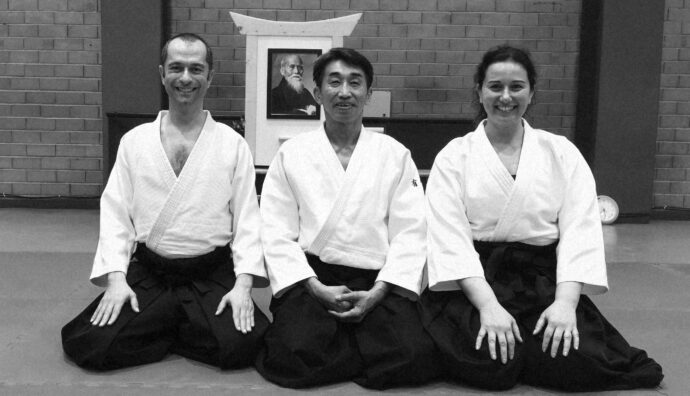Granada, December, 8th, 2019. We had just concluded one of the most intense and challenging seminar ever, under the guidance of Seishiro Endo.
No one could imagine that in a few months everyone’s habits would change, some only due to the years of the pandemic. Others, forever.
Endo always repeated two guidelines for the best use of his teachings. On the one hand he reminded everyone that his age could not guarantee the certainty of his presence in the future. On the other hand, he underlined that his role was to give ideas, to reflect on and explore in depth in our daily work in our own practice.
Five years later, we are in Naples meeting Kaname Ariga, who is Seishiro Endo’s student and, in fact, successor in supervising the groups that follow his technical approach around the world.
Many things have changed in the meanwhile. The European group that refers to Seishiro Endo, the Musubi Dojos, has meanwhile lost its coordinator, the charismatic figure of Matti Joensuu.
However, at the beginning of the seminar, Kaname Ariga recalls that for him the practice of Aikido is to facilitate the exchange of ideas and that his proposal is a proposal we have to be committed to for a weekend but it should be developed by each individual in his own reality.
Here is continuity, perhaps the true meaning of the concept of tradition: we collect the baton from the past to continue a journey.
The point of contact between past, present and future lies in the principles which, in this style, are based on the concepts of atari (当たり) and musubi (結び). To maintain a warm connection.
Anyone who has been practicing Aikido for some time develops his/her own awareness of the concepts of grounding, connection, centrality, extension, balance, intention…
Using a metaphor from Luis Mochon, who was of great support in decoding the teaching proposal on and off the tatami, one can speak different languages and, despite this, be able to communicate, just as one can speak the same language and not understand each other. If it is possible to identify, understand and share the function of the tool used, the connection between two subjects has the desired effect.
Reducing the concept of atari to the contact or action of uke and musubi to the connection that is generated in the couple is dangerously reductive. Also because Japanese language is sufficiently chaotic to drive those who limit themselves to a literal and mental understanding of what they hear into overdrive. Atari is the contact, the target, the success, the prediction, the bruise… but it is also a homophone of closeness, affability.
Understanding must therefore necessarily be facilitated by direct practice with the teacher and with expert students. From this point of view, Kaname Ariga revealed himself to be a teacher who, like the Seishiro Endo we knew, practices with everyone present. A person who is not afraid to reverse the roles of nage and uke, to get caught and to fall.
His invitation to practice with expert students was not only wise but revealed the awareness that this teaching line is very clear for the setting of the actual techniques but does not rest on a geometric schematization of the principles.
The work on the axes, on the mobilization of the shoulders, on the total relaxation of the movement even if maintained in extension and on the principle of ten-chi as an activator of the movement and therefore of the techniques was very interesting.
A kind of basic ki-hon work; perhaps because every successor has the right and duty to start from scratch to be effective. Perhaps because, no matter how much good will the student may put into it, the student often tends to look at the finger and not at the Moon, especially if to get to the Moon the work to be done is not just to understand the concept but to live it.
An expert teacher can see at a glance whether the audience in front of him moves their body or embodies a principle and Kaname Ariga is an expert.
We also had the pleasure of sharing time outside the tatami with him; an extremely available person, who does not create but reduces distances and who takes care to verify whether his message has arrived in a clear and constructive way.
This kind of attitude is what leaves the greatest trace in us who cross these worlds to test our path with different tools and it is what, in a succession that marks a generational transition, allows us to look at the present and the future with optimism, not only for those who follow him but, broadly speaking, for the whole community of practitioners.
Kaname Ariga: the generational transition

